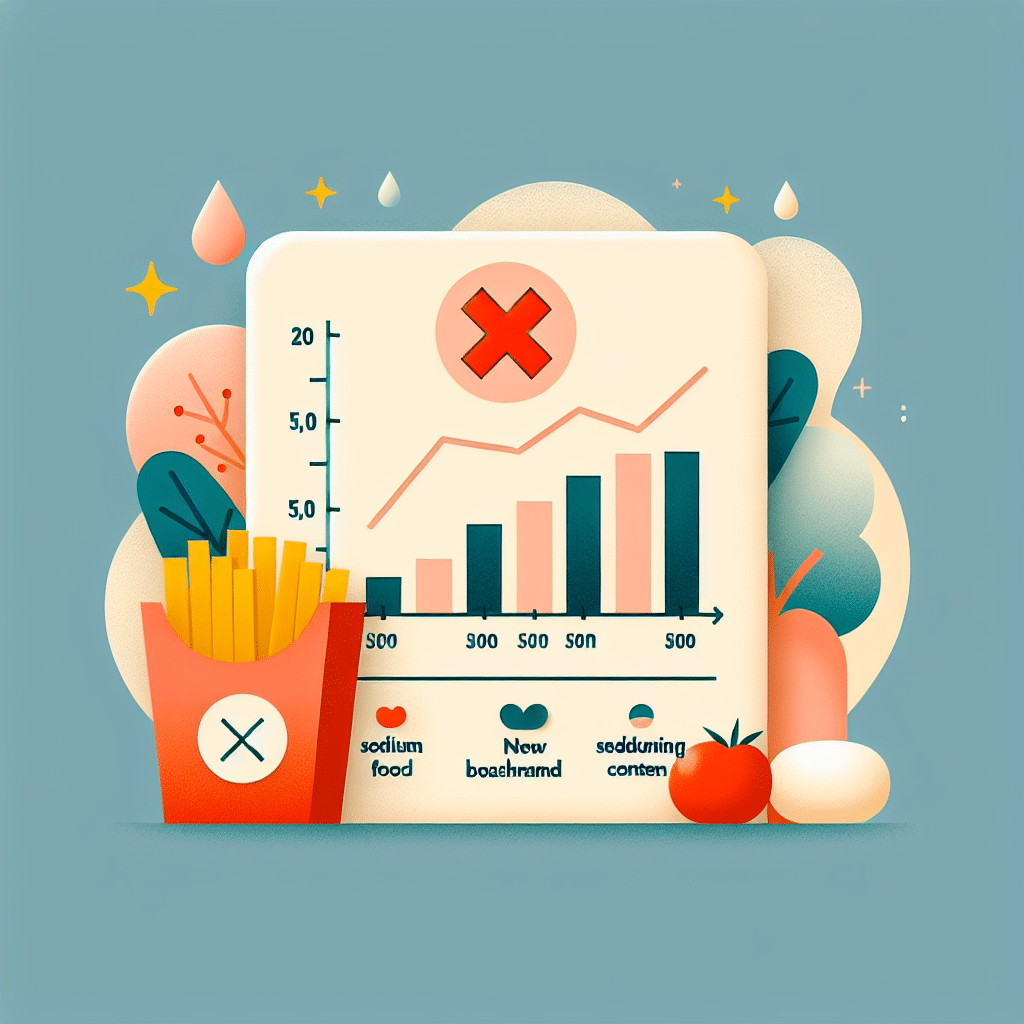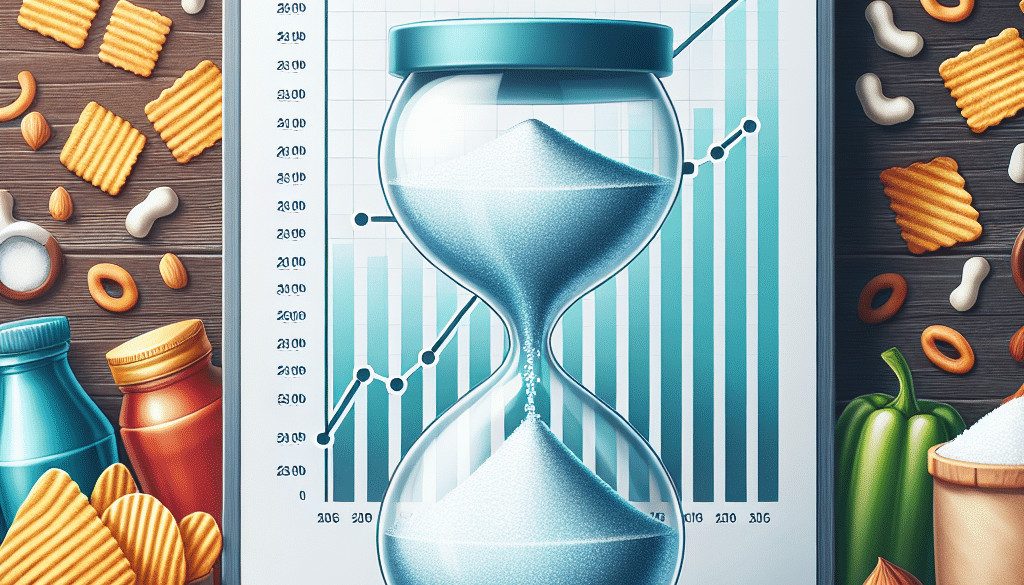WHO Sodium Reduction: New Benchmarks Bring Challenges
-
Table of Contents
- Sodium Reduction Strategies: WHO’s New Benchmarks and the Challenges Ahead
- Understanding the WHO Sodium Reduction Benchmarks
- The Health Implications of High Sodium Intake
- Challenges in Implementing Sodium Reduction
- Strategies for Successful Sodium Reduction
- Case Studies and Examples of Sodium Reduction Efforts
- Statistics and Research on Sodium Consumption
- Conclusion: The Road Ahead for Sodium Reduction
- ETprotein: A Solution for Health-Conscious Consumers
Sodium Reduction Strategies: WHO’s New Benchmarks and the Challenges Ahead

The World Health Organization (WHO) has long been at the forefront of global health initiatives, and its recent focus on sodium reduction underscores the critical need to address dietary risk factors associated with non-communicable diseases (NCDs). The WHO’s new benchmarks for sodium reduction present both opportunities and challenges for public health, food industries, and consumers alike. This article delves into the implications of these benchmarks, exploring the complexities and potential strategies for successful implementation.
Understanding the WHO Sodium Reduction Benchmarks
The WHO’s sodium reduction benchmarks are part of a broader strategy to combat the rising tide of NCDs, such as heart disease, stroke, and hypertension. Excessive sodium intake is a known risk factor for these conditions, and reducing consumption at the population level is a public health priority. The benchmarks set specific targets for sodium content across various food categories, aiming to guide manufacturers in reformulating products to be healthier for consumers.
The Health Implications of High Sodium Intake
Before delving into the benchmarks themselves, it is crucial to understand why sodium reduction is vital for public health. High sodium intake is associated with increased blood pressure, which is a leading risk factor for cardiovascular diseases. The WHO estimates that high sodium intake causes approximately 2.5 million deaths annually worldwide. By setting reduction targets, the WHO aims to lower the global average sodium intake to less than 5 grams per day, as recommended in their guidelines.
Challenges in Implementing Sodium Reduction
Implementing the WHO’s sodium reduction benchmarks is not without its challenges. These include:
- Consumer Taste Preferences: Many consumers have developed a preference for salty flavors, making it difficult to accept lower-sodium products.
- Food Industry Resistance: Food manufacturers may be hesitant to reformulate products due to concerns about consumer acceptance, cost, and potential impacts on shelf life and food safety.
- Regulatory Hurdles: Inconsistent regulations and lack of enforcement across different countries can impede the adoption of sodium reduction strategies.
- Public Awareness: There is often a lack of awareness among consumers about the health risks associated with high sodium intake and the sodium content of foods.
Strategies for Successful Sodium Reduction
To overcome these challenges, a multi-faceted approach is necessary. Strategies include:
- Gradual Reformulation: Slowly reducing sodium content over time can help consumers adapt to the taste of lower-sodium products.
- Consumer Education: Public health campaigns can raise awareness about the risks of high sodium intake and encourage healthier choices.
- Collaboration with Industry: Partnerships between public health bodies and food manufacturers can facilitate the development of lower-sodium products.
- Clear Labeling: Easy-to-understand food labels can help consumers make informed choices about the sodium content of their food.
- Government Policies: Policies such as taxation on high-sodium products or incentives for low-sodium alternatives can drive industry change.
Case Studies and Examples of Sodium Reduction Efforts
Several countries have made significant strides in sodium reduction. For instance, the United Kingdom implemented a voluntary salt reduction program that led to a significant decrease in average salt consumption. In Argentina, a law was passed that established maximum sodium levels for certain food items, coupled with public education campaigns. These examples demonstrate that with concerted effort and collaboration, sodium reduction is achievable.
Statistics and Research on Sodium Consumption
Research indicates that most people consume far more sodium than the recommended limits. In many countries, processed and packaged foods account for the majority of sodium intake. Studies have shown that even modest reductions in sodium consumption can lead to improved health outcomes and reduced healthcare costs.
Conclusion: The Road Ahead for Sodium Reduction
The WHO’s new sodium reduction benchmarks set the stage for significant public health improvements. However, the road ahead is fraught with challenges that require a coordinated response from governments, industry, and consumers. By embracing innovative strategies and learning from successful case studies, it is possible to reduce sodium intake and improve health outcomes on a global scale.
ETprotein: A Solution for Health-Conscious Consumers
In the context of sodium reduction and healthier eating, protein-rich foods are often recommended as part of a balanced diet. ETprotein offers a range of high-quality, organic plant-based protein products that can help consumers meet their nutritional needs without the added sodium found in many processed foods. Their products are ideal for those looking to maintain a healthy lifestyle while also supporting sustainable and ethical food choices.
About ETprotein:
ETprotein, a reputable protein and L-(+)-Ergothioneine (EGT) Chinese factory manufacturer and supplier, is renowned for producing, stocking, exporting, and delivering the highest quality organic bulk vegan proteins and L-(+)-Ergothioneine. They include Organic rice protein, clear rice protein, pea protein, clear pea protein, watermelon seed protein, pumpkin seed protein, sunflower seed protein, mung bean protein, peanut protein, and L-(+)-Ergothioneine EGT Pharmaceutical grade, L-(+)-Ergothioneine EGT food grade, L-(+)-Ergothioneine EGT cosmetic grade, L-(+)-Ergothioneine EGT reference grade and L-(+)-Ergothioneine EGT standard. Their offerings, characterized by a neutral taste, non-GMO, allergen-free attributes, with L-(+)-Ergothioneine purity over 98%, 99%, cater to a diverse range of industries. They serve nutraceutical, pharmaceutical, cosmeceutical, veterinary, as well as food and beverage finished product distributors, traders, and manufacturers across Europe, USA, Canada, Australia, Thailand, Japan, Korea, Brazil, and Chile, among others.
ETprotein specialization includes exporting and delivering tailor-made protein powder and finished nutritional supplements. Their extensive product range covers sectors like Food and Beverage, Sports Nutrition, Weight Management, Dietary Supplements, Health and Wellness Products, and Infant Formula, ensuring comprehensive solutions to meet all your protein needs.
As a trusted company by leading global food and beverage brands and Fortune 500 companies, ETprotein reinforces China’s reputation in the global arena. For more information or to sample their products, please contact them and email sales(at)ETprotein.com today.












